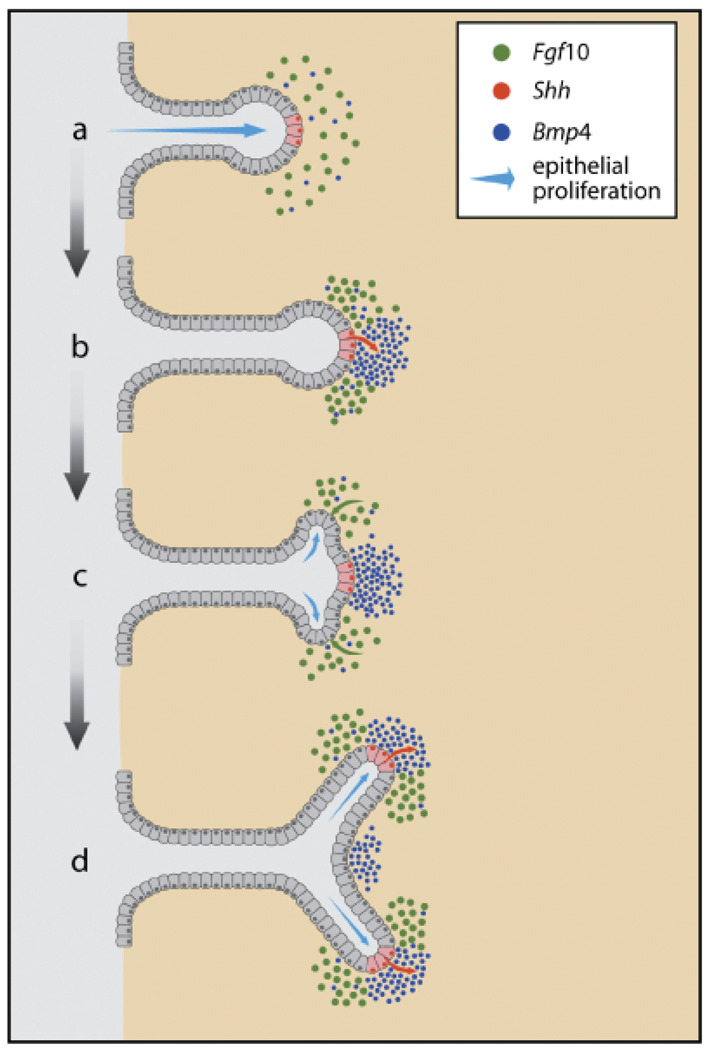Fig. 4.
A proposed model for dichotomous branching of the developing rat prostate ducts as controlled by localized expression and cross-talk of secreted morphoregulatory factors. The distal duct tips express Shh in discreet focal areas (for simplicity, only one shown in red) while the distal mesenchyme expresses Fgf10 (green dots) and Bmp4 (blue dots). As these cells make contact with each other (b), the secreted Shh (red arrow) activates ptc on mesenchymal cells, locally down-regulates Fgf10 (loss of green dots) and up-regulates Bmp4 (blue dots) expression. The focal downregulation of Fgf10 results in lateral subdomains of higher Fgf10 expression adjacent to the Shh foci, which in turn, down-regulates Bmp4 in that region and activates (green arrow) higher epithelial proliferation via epithelial FgfR2iiib (c). The disparate epithelial proliferation rates in the lateral domains results in the sprouting of two buds on each side of the Shh foci (blue arrows) which initiates a branchpoint (d). Further, the elevated Fgf10 in the lateral domains up-regulates Shh and ptc expression (d), which allows repetition of the above steps and results in complex branching patterns (Based on results published by Huang et al., 2005).

